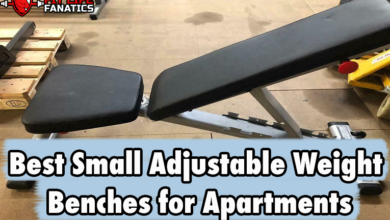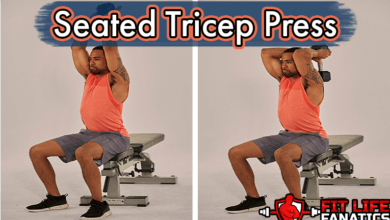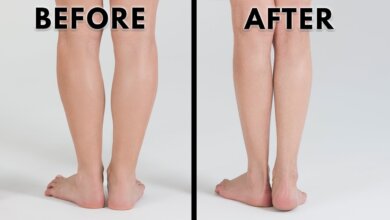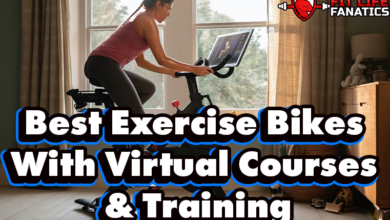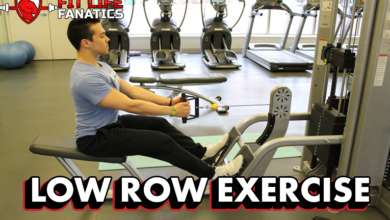Bulgarian Split Squat; How it’s Done, Muscles Worked, Variations and Alternatives
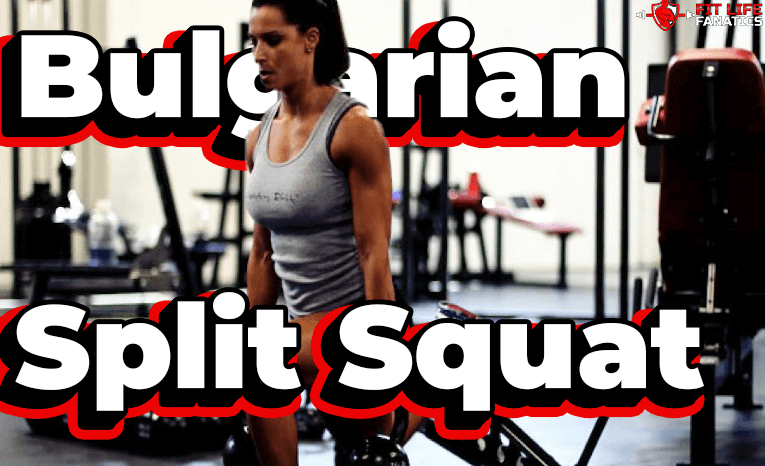
Ahaa! The Bulgarian Split Squat! The one compound lower-body workout that is as punishing as it is effective. I have had a love-hate relationship with this exercise for years, but I keep coming back for the gains.
May be you’re just getting started on your fitness journey, and wondering what part of your body to workout after chest day. Perhaps you are a seasoned athlete looking to build lower-body strength exercise to throw into your chest and leg workout routine.
Whatever your objective, there’s something for everyone in the Bulgarian split squat.
Hold your horses tho, there’s a whole lot to know about this single leg squat exercise before you can dive in head over heels. That is what I’m setting out to share with you in this post.
Ahead, you will find everything from how to perform the Bulgarian split squat, to the variations of this exercise, similarly effective alternatives, and a galore of other handy tidbits.
Ready to put your glutes to the test? Then strap in let’s get rollin’.
How to Perform Bulgarian Split Squat Workout
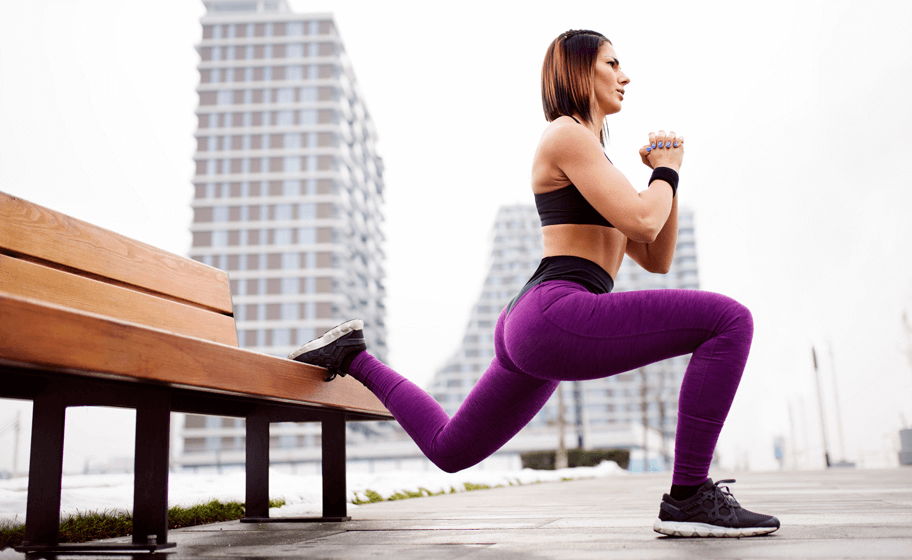
If you are a regular gym rat, then you’ve probably already seen someone with their rear foot on the bench doing Bulgarian split squat, or even done them yourself. However, if you’re a total newbie trying to add a few workouts to your regimen, then here is how you should do the Bulgarian split squat.
Step 1; Stand with your rear foot elevated on a bench, or a raised platform
Step 2; Step forward with the other foot to assume a split squat stance
Step 3: With weights on each hand (could be kettlebells, dumbbells, or even juggling lacrosse balls) slowly lower your rear knee to almost touching the floor
Step 4; Rise back up to the standing position and repeat
Alternate the rep range between your left and right leg. Your call!
Why Is Performing Bulgarian Split Squats Even Necessary; the Benefits
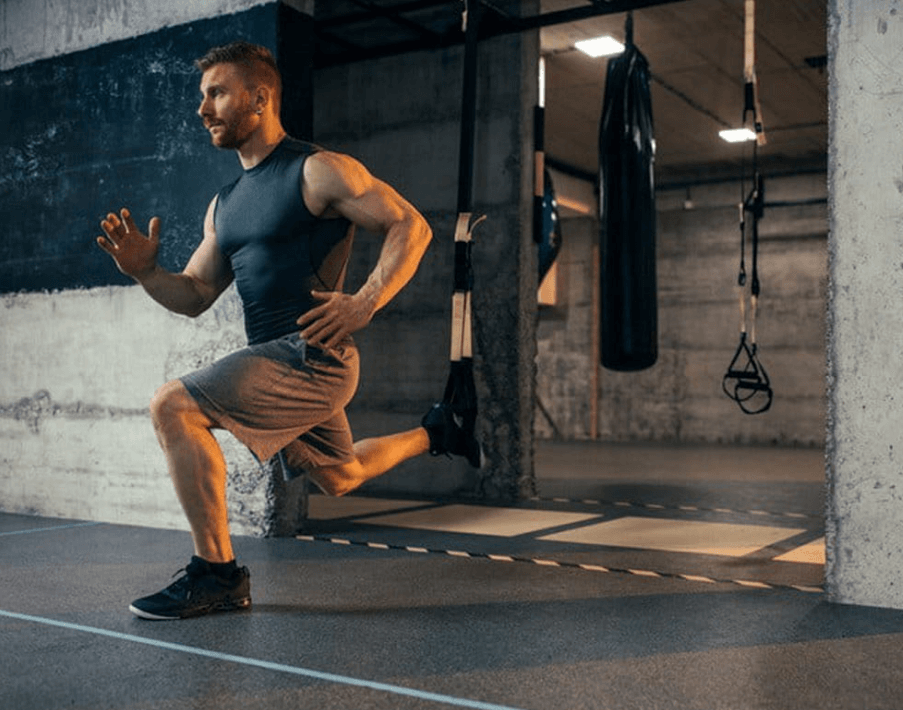
So you might be wondering, why bother? Is this single leg exercise worth the struggle?
Honestly, I think it is, and here’s why;
First, with the Bulgarian split squat exercise, you will reap amazing benefits from the different variations of this exercise. This also counts as a cool way of switching things up to avoid boredom.
You can scale things up as your fitness levels advance, this is one of those workouts you can hardly (if ever) outgrow. And that's not all you stand to gain if you perform Bulgarian split squats often.
Balance and Coordination

Like other unilateral movements, the Bulgarian split squat exercise is ideal for correcting the imbalances that we often see with bilateral moves. I can tell that you seldom ever have your back leg resting on a raised surface, even on stairs. Combine this stance with the Bulgarian split squat move, and you will put your hip flexors and stabilizers through their phases.
Increased Athletic Performance
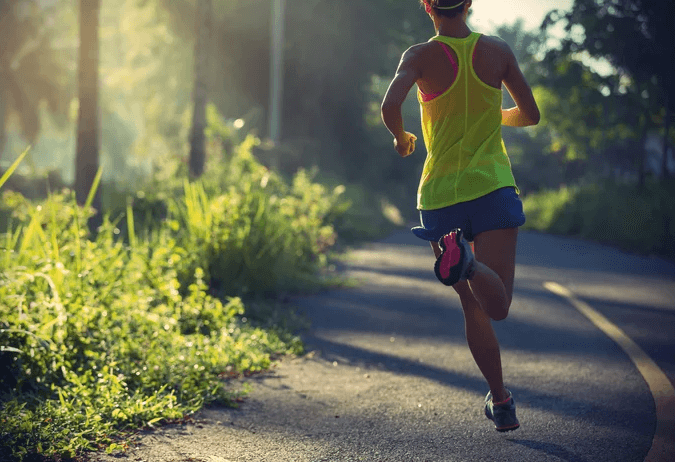
Any seasoned athlete out there will tell you that most of the movements in sports are often done unilaterally – be it jumping, running, kicking, name it. If you often feel like tipping forward or have trouble balancing, the Bulgarian split squat will improve your performance in pretty much all of these sports – and exponentially so, too.
Build Glutes
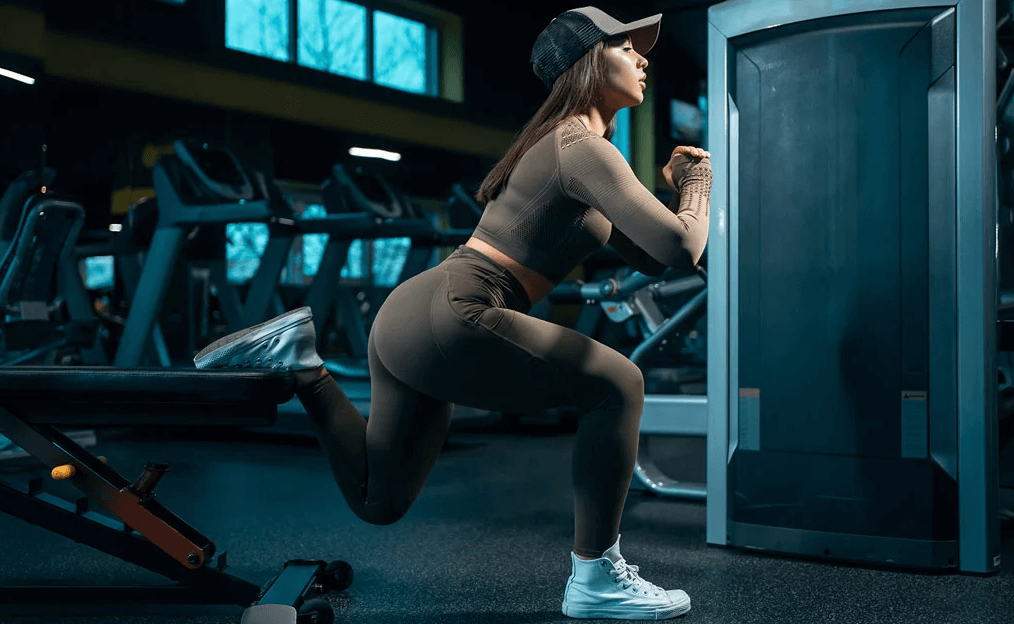
Glute development is of great importance for both overall fitness and sports performance. Also known as Bulgarian booty builders, this exercise works wonders if you are trying hard to get rid of that mom butt and build a nicely rounded jiggly butt.
Sure, you can still get a big bubble butt by running on an incline treadmill, or by toning your glutes using resistance bands, but this workout is in a class of its own as far as working your glutes.
There you have it, ladies 🙂
Works Your Core
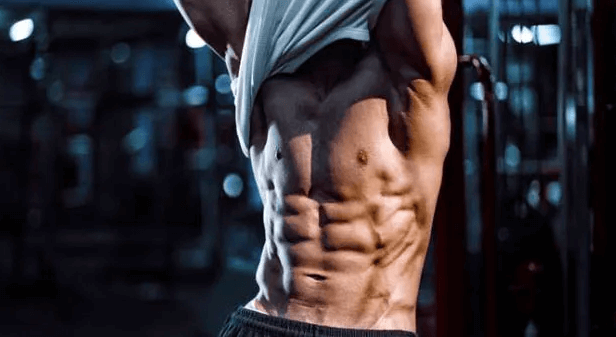
Having a workout that works your lower or upper body is one thing, but having one that goes above and beyond to work your core hits different. Turns out, the Bulgarian split squat is one such exercise.
Of course, there's a ton of other workouts out there (say the star plank, double crunch, water crunches, Australian pullup...etc) that you can use to build core strength from nothing and build some nice 10 pack abs. But there's something about this particular exercise that stands undisputed when it comes to hitting abdominal muscles.
It all starts with the balance and coordination we mentioned above. With the offset balance that this exercise throws at your feet, your you have to keep your core engaged to keep your torso upright and stabilized to maintain balance. Add a bit of weight to the mix, and you build muscle and ramp up the gains even more.
It’s Good for The Spine
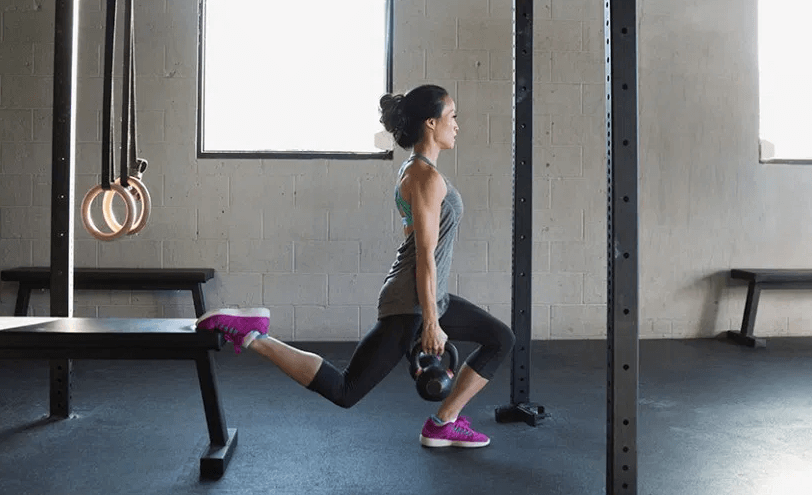
Loading heavy weight on your shoulders is great for those massive gains, but it’s not for everyone, is it? If you’re that person who just can’t handle a full squat with a loaded barbell bearing down on your shoulders, then a split squat (preferably a one foot squat) is the way to go.
With this squat, you might not reap as many benefits as you would with weights, but at least it lets you tone those muscles without compromising your spinal health or risking worsening the situation in case you have back problems.
Enhanced Hip Mobility
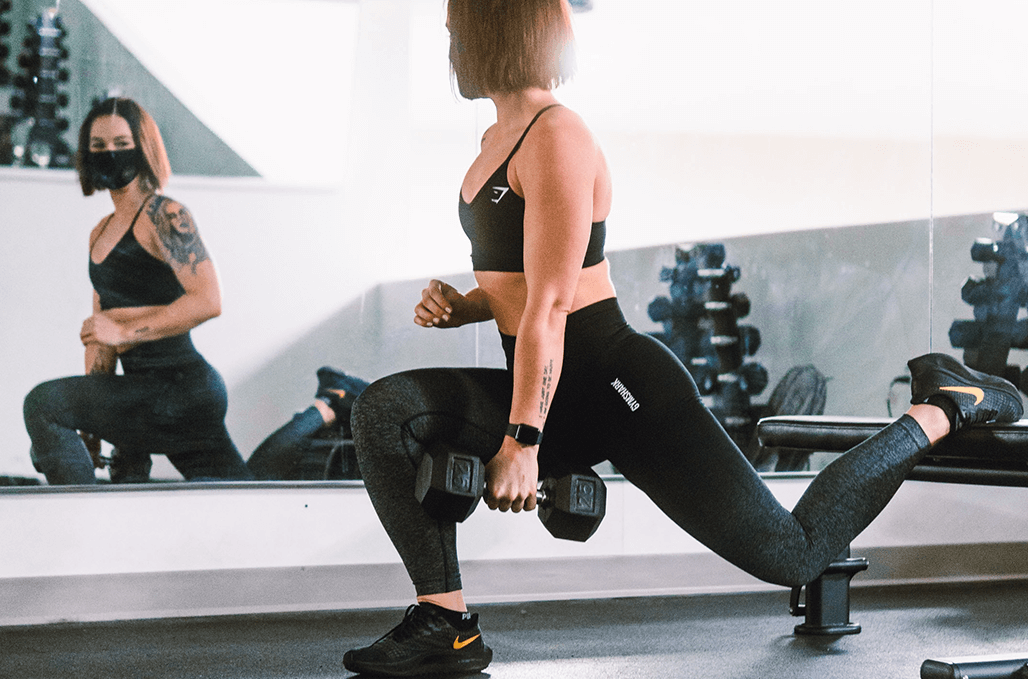
Some of us experience tight hips once in a while, if you stopped working out for a year this is bound to happen. But for some, it’s a problem that just won’t go away. This can make executing such workouts as weighted squats a real pain. Split squats make life easier as far as allowing you to reap the benefits you would with a regular squat, but without having to cringe throughout the move. Also, split squats give you a stretch on the hip joints and muscles, helping loosen up your hips quite effectively too.
Level out Imbalances
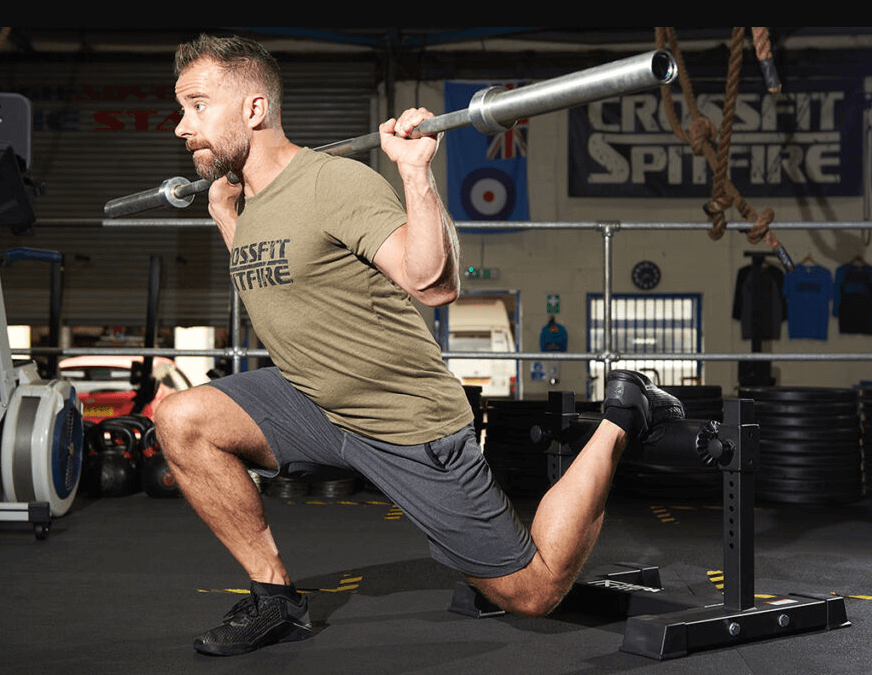
We all have that dominant hand, leg, shoulder…no one is perfectly symmetrical after all. While you will often feel, or notice these imbalances when doing bilateral workouts, unilateral moves like the Bulgarian split squat help sort of “balance ‘em out” since you work each side at a time.
What’s more, this exercise makes for an excellent option for building several muscles, which brings us to the next cool thing I love about Bulgarian splits.
Bulgarian Split Squat Muscles Worked

From what I have read, seen, and experienced, with Bulgarian split squat works several muscles in your lower body.
Even then, just like other single leg exercises like some lunge variations, the Bulgarian split squat activates a wide range of muscles. So it’s really up to you to pick the one that best targets the area you want to focus on.
That said, here are the primary muscles that you can tone with the different Bulgarian split squat variations.
- Hip adductors
- Quadriceps
- Glutes (all the three groups; Gluteus minimus, medius, and maximus)
- Calves – both soleus and gastrocnemius
- Hamstring muscle
If you are shooting to cover more muscle groups than these, have no worries. I will also take you through some great alternative exercises (with virtually the same movement) that will help you widen the scope.
With that done and dusted, let’s get down to figure out how to pick the right weight when doing the Bulgarian split squat.
Dumbbell Bulgarian Split Squat
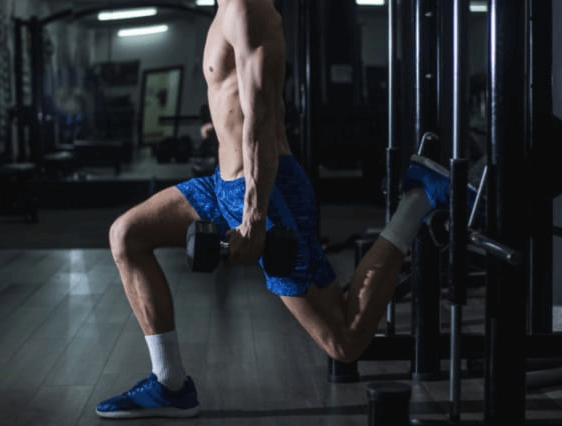
The use of dumbbells is the most common practice for many athletes looking to ante up their Bulgarian split squat intensity. Of course, some people use short barbells, and kettlebells prove their worth here too. But dumbbells are the mainstay for many, and my all time favourite. That shouldn't come as a surprise, considering that there's an endless supply of budget dumbbells out there, you just need to know the best place to buy a set.
The good thing about the use of dumbbells (or even kettlebells) is that you don’t have to change anything as far as maintaining a stable position. Just hold one on each hand and carry on with your Bulgarian split squat as you would without the additional weight.
Now that’s the easy part, but things get a tad complicated when it comes to figuring out how much dumbbell weight you should use for this lower body exercise. To make it easier for you, here’s a breakdown of weight selection depending on your fitness level.
- Beginners: 22lbs
- Intermediate: 65lbs
- Advanced: 97lbs
- Elite: 132lbs
Bulgarian Split Squat Variations
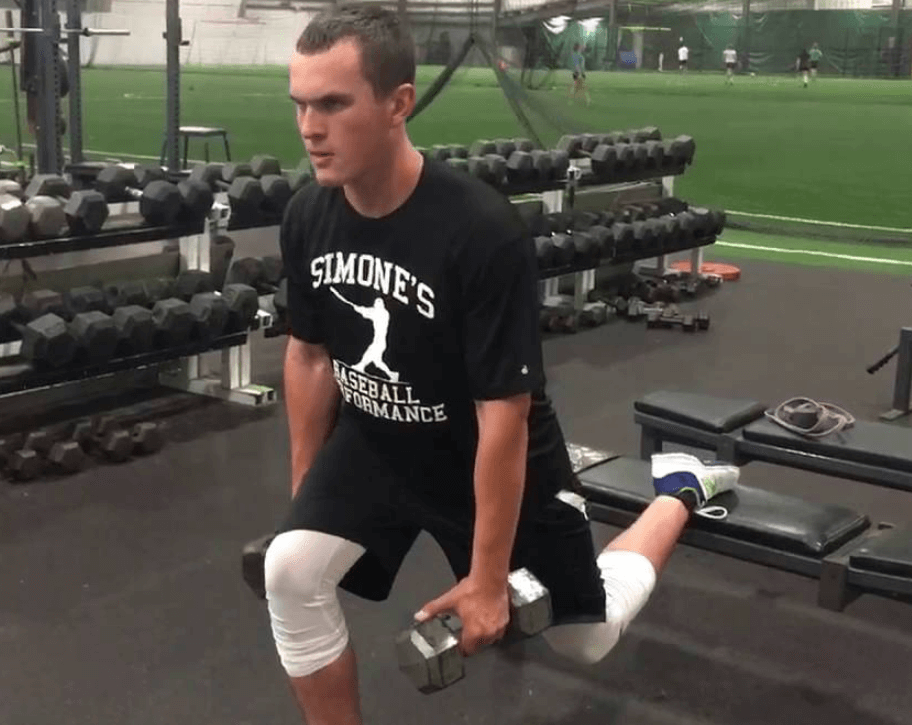
Now that you know what you stand to gain from performing Bulgarian split squats, and the amount of weight that best suits your fitness level, here are several variations of this exercise that you can try.
Zercher Bulgarian Split Squat
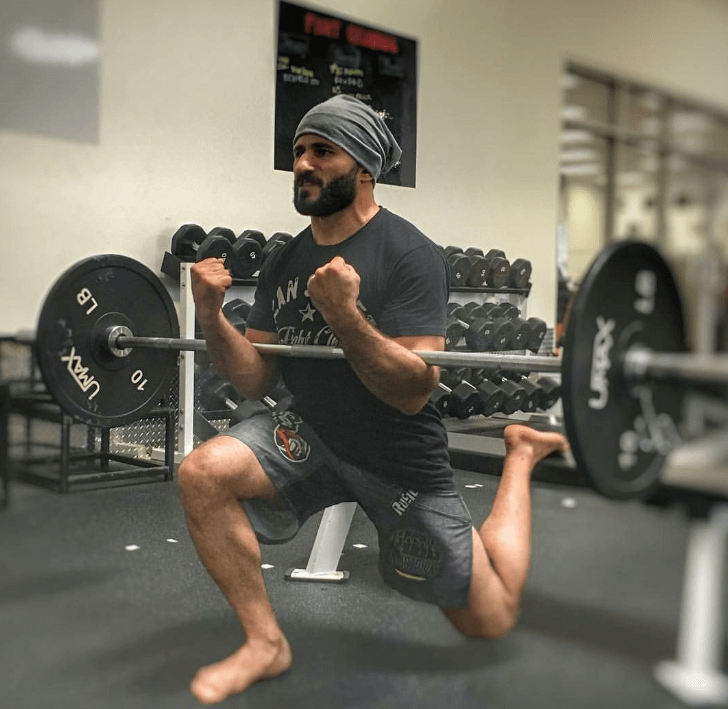
If my humble opinion is anything to go by, I would say Zercher is by far one of the best, if not the best variation of this split squat. The thing I love the most about Zecher squats is that additional load with the use of a barbell – so you’ll be doubling your gains several folds.
What’s more, with the weight in front of your body recruits your core muscles as they kick in to stabilize your spine. Not to mention that the front-loaded design of this variation also works your quads quite effectively.
Isometric Bulgarian Split Squat
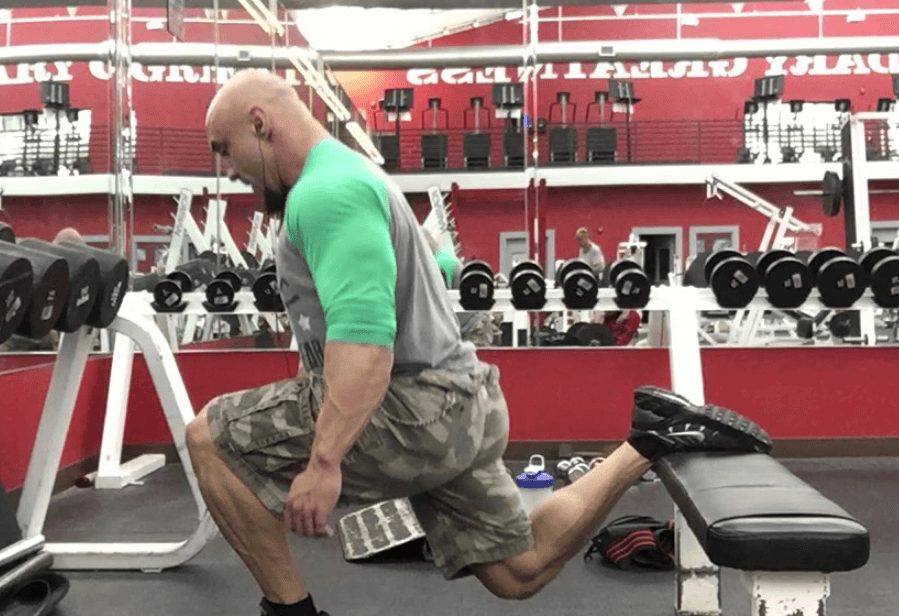
This one kicks things up a notch with the isometric pause at the very bottom of the move, with your knees just about to touch the floor. It’s a great way to put your legs through a baptism of fire (you’ll feel the burn, especially for beginners) and come out on the other end with massive gains. Besides, the isometric variation makes for a perfect choice for those looking to practice on and perfect a correct form.
Landmine Bulgarian Split Squat
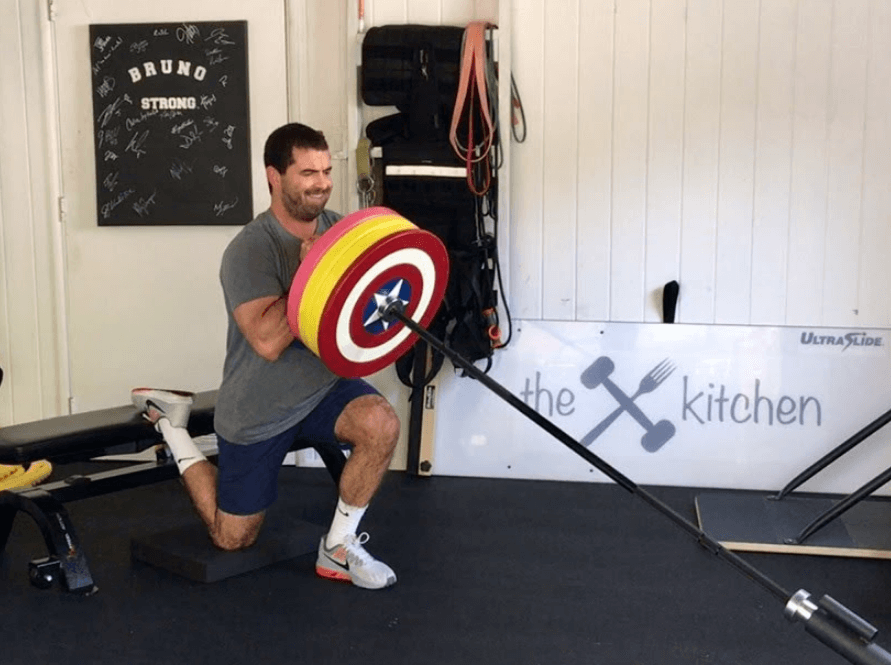
If you’re in this to build strength, then give the Landmine Bulgarian split squat a shot. It sure will make you cringe, cry and curse, but it’s as awesome as it is awful. The fact that you can stack up on more weight than relying on just dumbbells and kettlebells makes this variation a badass when it comes to taking matters to the next level.
Eccentric Bulgarian Split Squat
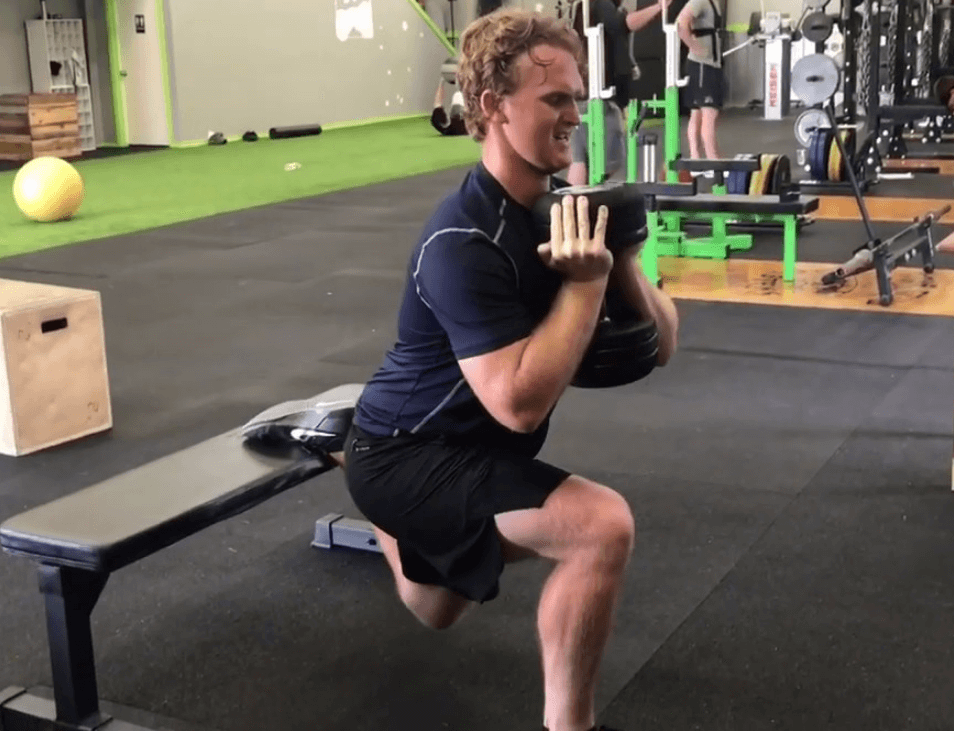
If there’s one variation of the Bulgarian split squats that you will hate doing and love the gains, it has to be this one right here. What makes me hate this variation the most is that I have to slow the move down as much as I can on the lowering/eccentric phase.
This makes it tormenting and it seems to take forever, but that’s where the secret lies. By taking it easy on your way down, and working against gravity, you achieve insane gains in muscle toning, building stronger legs, and better overall form for heavy lifting and other.
Dynamic Barbell Bulgarian Split Squat

This one is for the big boys (and girls) who have advanced skills and want something more challenging to take on.
Essentially, as the name suggests, you do them with the barbell, but you can as well use resistance bands.
This variation helps you generate strength fast, you can say bursts of power. To get it right, you need to explode from the bottom phase of the move with force and momentum, but without losing proper form.
Even with just around 4-6 reps per side, all it takes is about 3-5 sets to make you feel the heat (and change) right there and then. But in the long run, it helps improve your running, jumping, and overall lower body explosive strength.
Bulgarian Split Squat Alternatives
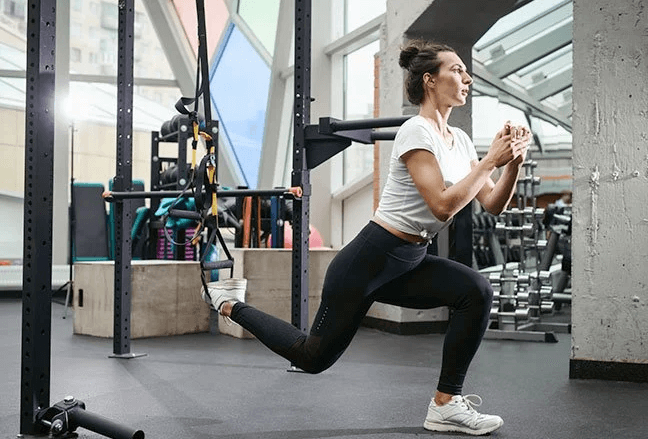
If you have tried all of these options, and still need something new to add to your workout regimen, then don’t worry. I did a bit of digging on the options that are out there that work just as effectively as Bulgarian split squats and/or the variations.
So yeah, buckle up, let’s jump straight in and check ‘em out;
Front Foot Elevated Split Squat
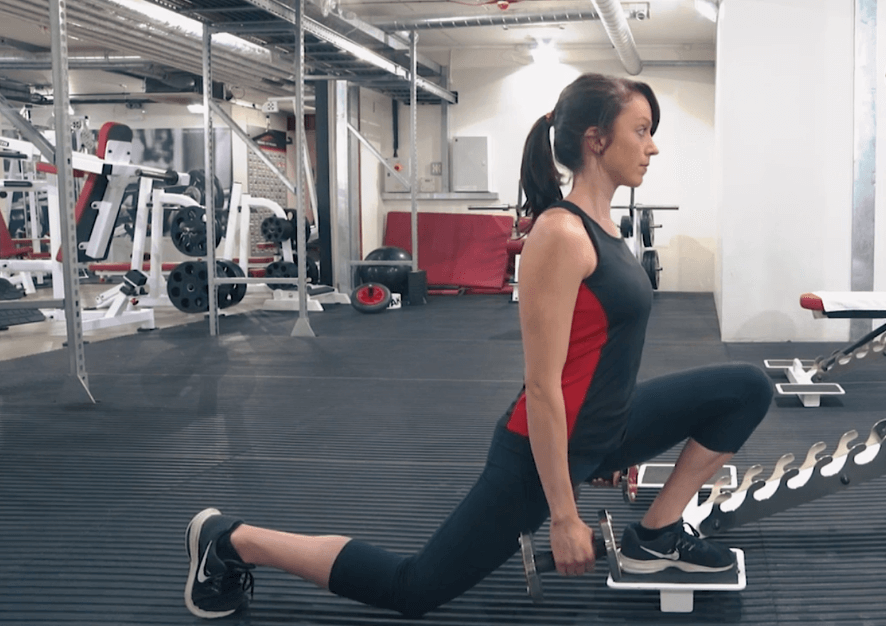
Let’s kick things off with the front foot elevated split squat. It’s more like the opposite of the Bulgarian split squat, in this sense. Thing is, during the Bulgarian split your back foot is placed on an elevated surface, placing more of the weight on the front foot and shifting the center of gravity slightly towards the front of your front foot.
With the front foot elevated split squat, however, you do the polar opposite – you put the front foot on an elevated surface and more of the pressure is on your back foot.
Unlike the Bulgarian split squat which targets the glute and quad muscles, this alternative works more of your hip adductors and hamstrings.
How to perform the front foot elevated split squat;
- Step 1: Have an elevated platform about 6” to 12” high
- Step 2: Hold a pair of weights on each hand and place your front foot on the platform
- Step 3: Keeping your back foot flat on the ground, the back leg straight and your back held straight up
- Step 4: Lower your body slowly, bending your back knee until it hovers slightly above ground
- Step 5: Rise slowly to the starting position.
That’s one rep.
Heel Elevated Split Squat
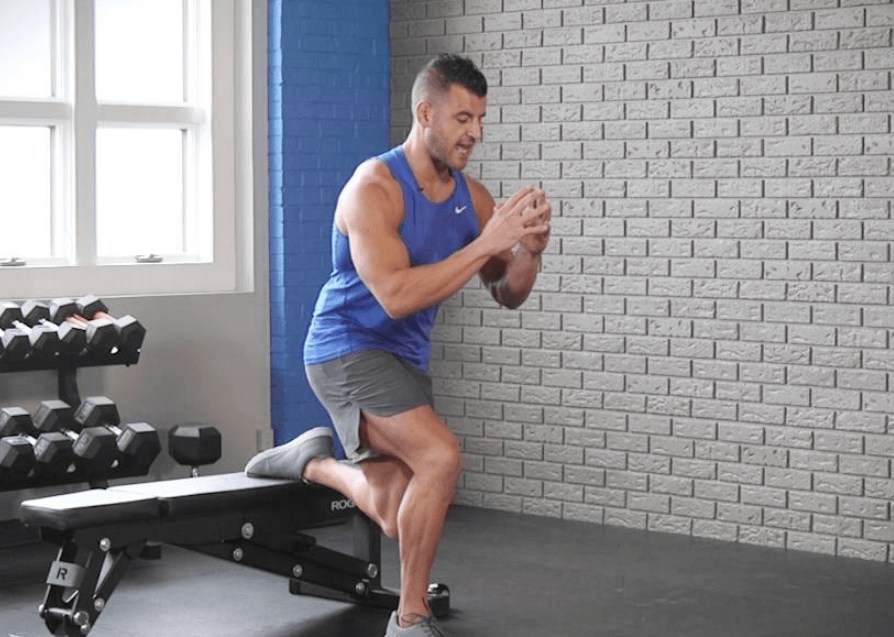
Up next is the heel elevated split squat, which does recruit the glutes and hamstring as the Bulgarian split squat, although this one does hit more on your quads.
Here’s why; see, you need to place your heel on a raised object like a wedge, thus exerting more of the load on the front part of your foot, bending your knee forward. The forward movement of your knee is what activates your quads.
How to perform the heel elevated split squat;
- Step 1: Have an elevated object, around 1 inch high
- Step 2: You can hold a pair of weights – one on each hand if you wish to.
- Step 3: Stand with your back straight, maintaining a straight from your shoulders, hips, and your back knee.
- Step 4: Maintaining pressure on the heel of your front foot, slowly lower your body in a split squat until the knee of your back leg hovers slightly above the floor
- Step 5: Rise while keeping both knees slightly bent and the front one almost fully straightened out.
That’s one rep!
Toe Elevated Split Squat
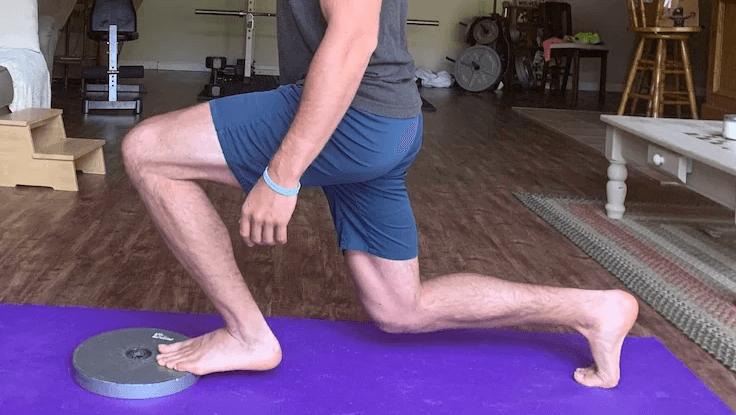
Here’s yet another split squat that works your lower body, more so the hip adductors and your upper hamstring. The name pretty much says it all, you do this split squat with the toes pointed slightly upwards.
This one, however, calls for more great ankle mobility, if this is something you’re lacking, then you might have a hard time doing this one (well, at least with squatting as deep as you should) so you might need to work on that first then come back.
How to perform the toe elevated split squat;
- Step 1: Select or set up an object that will enable you to elevate the toe section of your foot by about 0.5 or 1 inch
- Step 2: Assume an upright stance with your shoulders, hips, and back knee aligned – you can hold a dumbbell in each hand if you want to add weight
- Step 3: Shift the pressure to your front foot while easing it on your back
- Step 4: Rotate your midsection (mostly the pelvis area) to the front with your hips towards the front leg
- Step 5: Lower your back knee until it barely touches the floor allowing the knee and shin on your front knee to move forward over the toes. Then raise to the starting position – bending both knees ever so slightly.
And voila! You have completed one rep!
Machine and Weight Exercise Alternatives
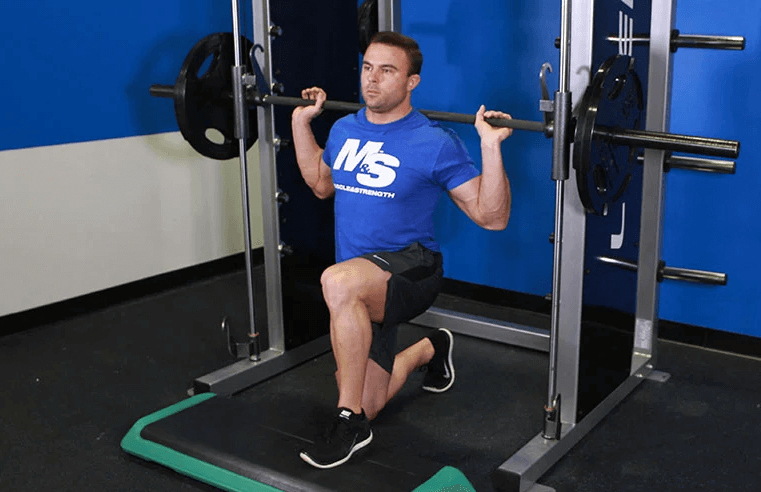
While the bodyweight exercises we have discussed above make for a great variety of options for the Bulgarian split squat, there are also machine workouts that you can try for similar or even better results.
Here are some cool machine workouts that you can do if you want a swap for your Bulgarian split squats;
Cable Zecher Split Squat

If you have a cable machine, then you should try doing the cable Zecher split squat. It’s an effective workout that helps work your quadriceps more than you would with the Bulgarian split squat exercise.
Barbell Split Squat
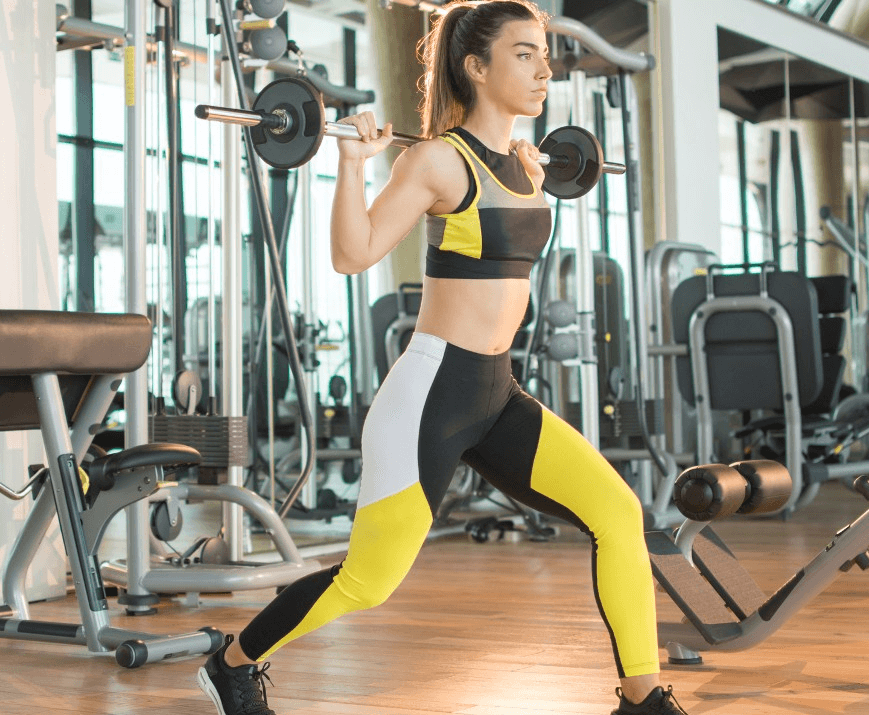
This is one of the most common split squat workouts, more so for intermediate and advanced fitness level buddies looking to add a bit of an edge into their sessions.
While you can add weight to your Bulgarian squats with dumbbells and kettlebells, if you want to ante up your gains, then this workout makes that possible as you can load more weight with a barbell.
Besides, since both the feet will be flat on the ground unlike on the Bulgarian split squat where one leg should be elevated, with this exercise you can add more weight – about 10 to 15% more actually.
Bulgarian Split Squat FAQs
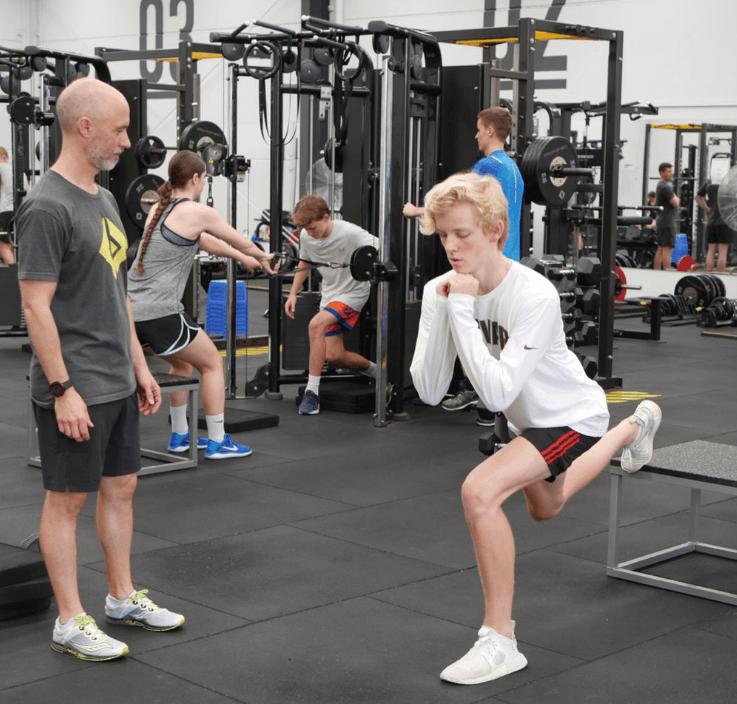
All said and done, I know some of you might still be having a few lingering questions. Let’s get right into that and clear things up a little bit more.
Q. What Is the Difference Between the Bulgarian Squat and Split Squat?
A. Well, both are single leg squats - which sets them apart from other types of squats I've covered before, like shrimp squats, and the likes of goblet squat and front squat or sumo squat and goblet squat.
However, as you might have noticed so far, with the Bulgarian split squat requires that you raise your rear leg, while with the split squat you won’t have to. This means with the Bulgarian split squat you will have a longer range of motion to cover than with the split squat, and the former is slightly harder than the latter, especially if you throw weights into the mix.
Q. Are Bulgarian Split Squats Better than Lunges?
A. Both of these lower body exercises make for excellent lower body workouts with a full spectrum of cool benefits like enhanced balance and stability. But there’s a slight difference; while both are good at improving your balance and stability, the Bulgarian split squat also proves handy for building strength and power if performed correctly with the use external load.
Q. Why Are Bulgarian Split Squats Good for The Glutes?
A. It’s all in the stance. With your front foot further in front and away from the bench, as you squat your knee remains behind your toes, at least that’s how it should be. This means an increased flexion that triggers muscle activation in your glutes and hams to lift your body weight during the raising phase of the move.
But the glutes and hamstring are not the only muscle groups worked by Bulgarian split squats, you also get to hit the quads, adductors, and calves with this workout.
If you're serious about building your calves, I'd recommend the donkey calf raises and other alternatives.
Q. Do Bulgarian Split Squats Build Size?
A. Absolutely! You not only get to tone the muscles in these areas, but if you add weights to your exercises, you sure stand to see muscle growth. Do note, though, that this will take time, hard work, and patience. And of course, if your goal is to create a muscle growth story for yourself, then using heavy weights, eating healthy foods and putting such machines as the leg press machine is the way to go.
Q. Can I Do Bulgarian Split Squats Every Day?
A. That will depend. How hard you are willing to push for your leg strength and your fitness level do count here. On the bottomline, however, knowing how many squats you should do a day to tone your legs does help, big time!
So yeah, I wouldn’t recommend doing this workout every single day. After all, you’re still doing other leg exercises.
My advice is that you do Bulgarian split squats at least three days per week with the right balance of volume and intensity. Once you get the hang of it, listen to your body and then you can tweak and twist things around depending on your preference or capability.
To Wrap it Up...
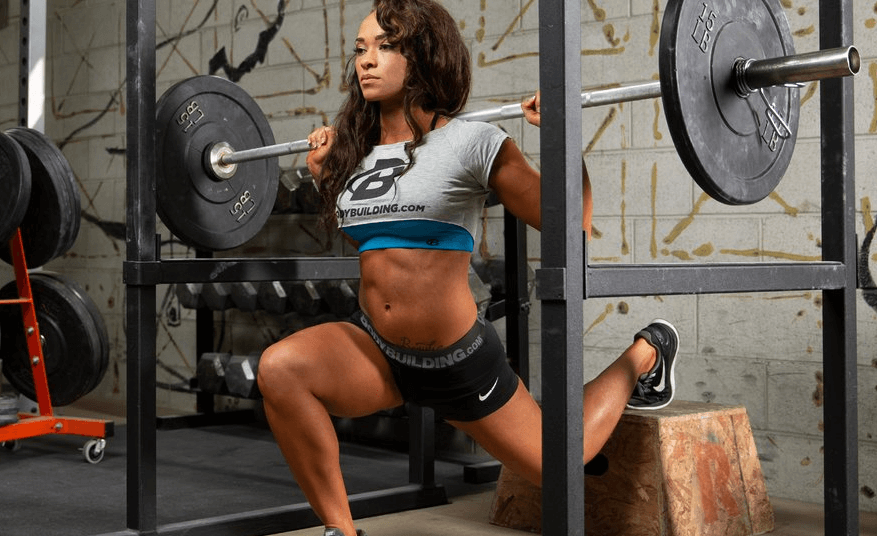
That’s it, folks! If you were stuck on where to get started with the Bulgarian split squat workout, I believe this post has equipped you with all you need to know to put your best foot forward and make the most of this amazing workout.
It’s tough, that’s for sure, but the gains are definitely worth the ordeal. Just make sure to be mindful of the tiniest of details to avoid injuries like straining your muscles and/or joints.
You need to get fit, not hurt.
Related Reading:
- Is Working Out 7 Days a Week Too Much? When is It Beneficial, When is it Not?
- Stopped Working Out for 6 Months – What Happens to Your Body During a Workout Break?
- Power Clean Vs. Clean
- Does Running Make Your Butt Bigger or Smaller? What About My Thighs?
- Exercise To Reduce Belly Fat for Female At Home
- Best Motivational Water Bottles for Inspiration & Hydration
Resources:
Ben Mayz
Hi there! I'm Ben, main author and chief editor at Fitlifefanatics.com. I have been obsessed with Strength Training and Fitness for 18 years now.
My passion for living a happy fit lifestyle is what made me realize that fitness is what I wanted for my future.
I went on to earn my Masters in Sports Training & Biomechanics.
My passion for Strength training & fitness and my love of helping others is what made me start Fitlifefanatics.
Here, myself, and a team of specialist aim to provide the most accurate, and actionable information possible in hopes to help foster the fitness community forward.
You can learn more about Fitlifefanatics on our About Page
